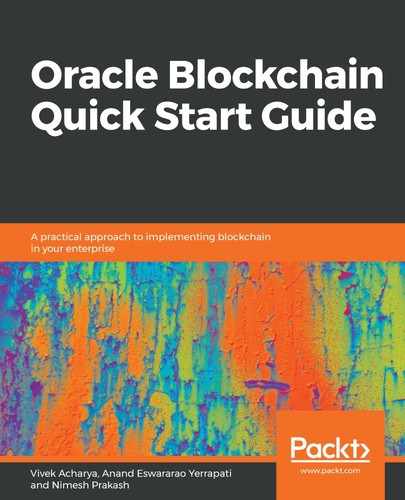When we use the term digital assets, we are counting a plethora of assets with the following main categories:
- Tangible assets and
- Intangible assets.
Following are the subcategories for tangible assets :
- Financial assets: Currency, equity (public and private), bonds, derivatives, commodities, finance, micro-finance, charity, and crowd funding.
- Records: Records can be public, semi-public, or other types as well:
- Public records:
- Financial records, such as spending records, trading records, mortgage records, and service records
- Public records, such as business ownership records, regulatory records, business incorporation/dissolution records, health/safety inspections records, immigrant records, and government laws
- Titles, such as land titles
- Registries, such as vehicle registry and forensic evidence
- License and permits, such as business license, building permits, and gun permits
- Certificates such as birth certificates, death certificates, and marriage certificates
- Digital identities, such as passport, SSN number, unique ID, voters ID, vote, a product's digital token, and so on
- Semi-public records:
- Certificates, that is, degree, grades, learning evaluation reports, and so on
- Records, such as employee records, behavioral records, medical records, accounting records, business transaction records, arbitration, supply records, delivery records, and citizenship records
- Private records:
- Contracts and escrows
- Personals, such as wills, trust, signatures, and GPS data
- Keys, such as car keys, hotel keys, apartment and home keys, locker keys, rental car keys, and package delivery keys
Following are the subcategories for intangible assets :
- Intangible assets, such as coupons, tickets, patents, reservations, trademark, copyrights, licenses (such as software licenses, video game licenses, and movie licenses), domain, art proofs such as authorship, photo, and video or audio ownership records
- Miscellaneous, such as temperature records and sports records
Here, we have tried to enlist some of these assets. However, there are use cases to manage and record these assets on a blockchain. In addition, there is a special category of use cases that deals with the provenance of some assets and is mostly implemented in SCM cases such as tracking from supplier to shelf, tracing medicines, and the custody of pills. The following are the possible subcategories of these use cases:
- Digital identity
- Provenance
- Records
Let's talk a bit more about these subcategories.
Digital identity: Identity theft and identity fraud are common headlines from the digital world. Billions of record are stolen, lost, and exposed every year across the globe, and two thirds of data breaches are because of identity theft and identity fraud. Blockchain DNA includes immutability and native authentication, which curb identity theft and identity fraud. For example, if the identification system is based solely on biometrics, then identity verification issues are omitted. As a result, banks, governments, and organizations can use highly accurate results. Even before biometric identity verification becomes a reality (for the world, not just in specific cases), private key ownership is a highly secure and a proven way to manage identity, where keys are digital assets. Hence, user identities are managed and verified without the risk of exposing valuable information, such as personal data. Human identities, item identities, and uniqueness are verified and managed with digital tokens. A digital token is an asset that is the mapping of the physical item with a digital identity of the item. This digital token can then be used for SCM to prove provenance in order to provide the rights to intellectual property for example.
Records: Blockchain is not a decentralized database; it is a system of records. Every day, every single moment, businesses are creating transactions with these assets, where assets are exchanged between suppliers, customers, partners, and individuals. Blockchain is a system that records these transactions and the digital identities of these assets. This is immutable and enhances the confidentiality of the information that exists on the system and reduces fraud opportunities. Also, transactions are added to the blockchain in blocks after a consensus is met. Hence, the validity of the transactions cannot be denied.
Provenance: With a unique digital identity (digital token), any physical item can prove its authenticity and prove its origin. Since records are immutable in the ledger, an item can be traced from its origin to its end point. Provenance checks fake products and allows consumers to be informed before they pick the item as it now leaves the onus on the consumer because the consumer is fully informed of a product's origins, journey, temperature during journeys, farms, region, and so on. Consumers can make informed decisions. With provenance, every product will speak the truth. Companies know about the materials they're supplied with, can check whether any substandard items were used to build the product, and know about the potential issues they have.
Beyond that, blockchain will remove the cost that organizations incur due to the inspection of items and products. This is why the item to market time is reduced while trust is increased manifold. For provenance, blockchain induces transparency, sustainability, and trust in the item and product. The end consumer is well informed about the product, its ingredients, and its journey, even before they pick it up. Blockchain allows intelligence tracking and tracing of the product and manages a product's digital identity (for example, serial numbers), records the origin, and marks the authentication of constituting components and tracks the entire journey of the transformation, packaging, shipping, storage, and shelving of the product while managing regulatory compliance, and recalls and checks the authenticity of the products.
These subcategories are interrelated. For example, for provenance, the product's digital identities are a must. Transactions on that product, such as transformation, packaging, shipping, storage, and shelving are recorded on the ledger so that the digital footprint of the product can be analyzed. These digital footprints help the consumer trace and track it. However, on a broader level, we consider them as drivers for use cases such as tracking and tracing analytics, although they are primarily about the digital records of the asset.
